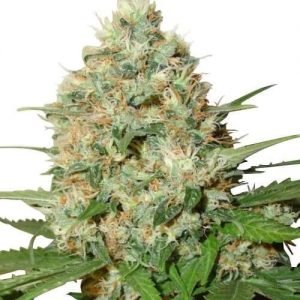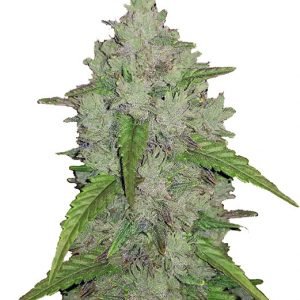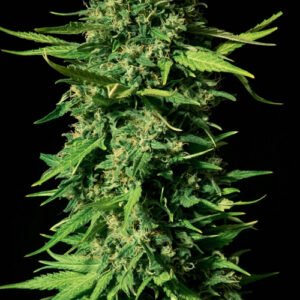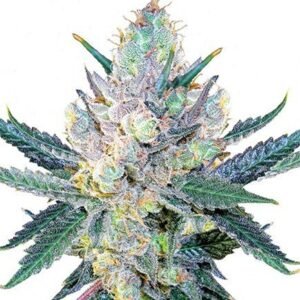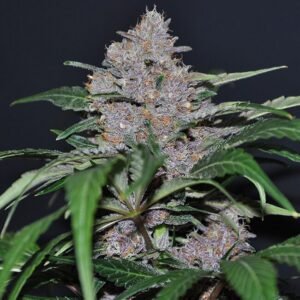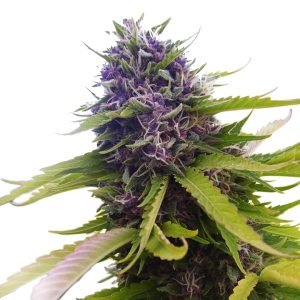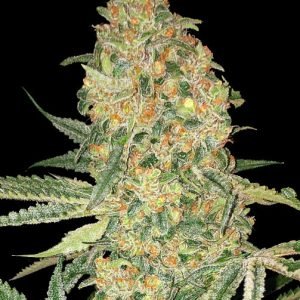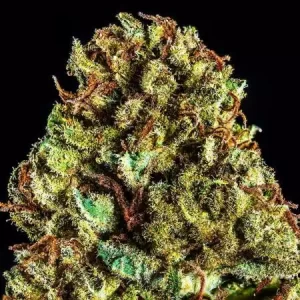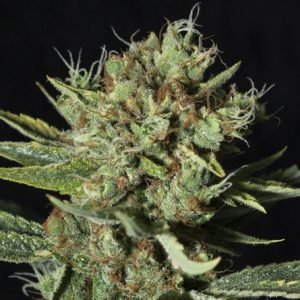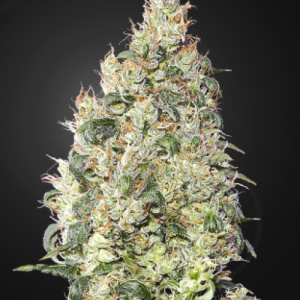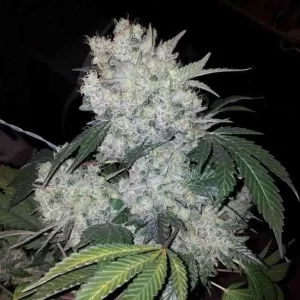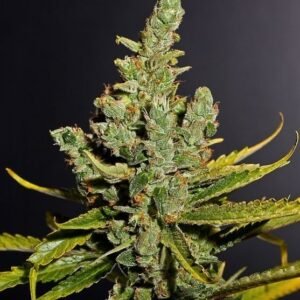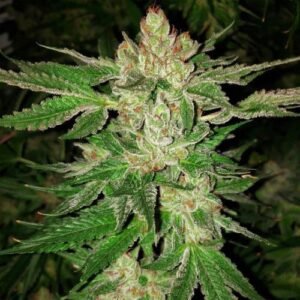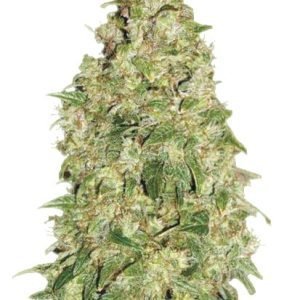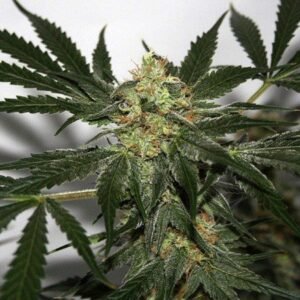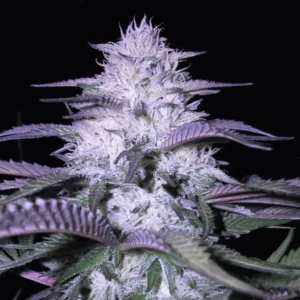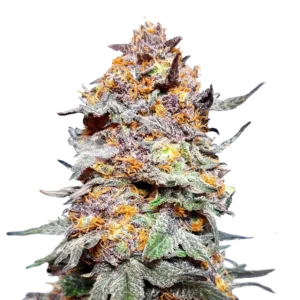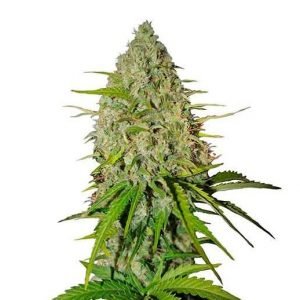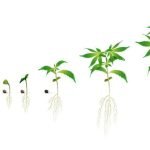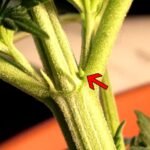
Auto Flower vs Feminised Cannabis Plants Leave a comment
Whether you’re just starting out or a seasoned cannabis cultivator, the debate between autoflowering and feminized seeds is a topic that you’ve likely encountered more than once.
Selecting between auto-flowering and feminized seeds is undeniably one of the pivotal choices you’ll make while cultivating cannabis, whether it’s indoors or outdoors. Determining which option is optimal hinges on numerous factors, primarily guided by your objectives and your approach to cultivation.
A sensible starting point is to recognize that your choice of seeds should be aligned with your cultivation goals and the outcomes you anticipate from your cannabis growing journey.
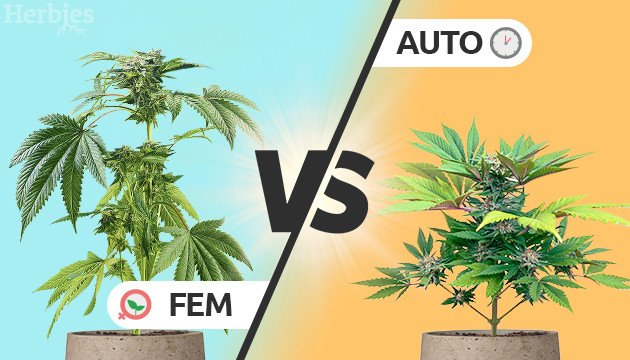
What are Auto-Flower Seeds?
The name of these seeds already offers a hint about their nature. Autoflowering cannabis seeds bloom automatically, boasting simpler cultivation, compact size, and faster harvesting compared to feminized seeds.
They have uncomplicated lighting needs and exhibit heightened resilience to temperature shifts, pests, and fungal issues. Autoflowering seeds develop into female plants that yield the smokable cannabis sought after by most growers. Essentially, this is the novice’s choice for initiating their own cannabis cultivation.
Typically, auto-flowering seeds take around 8-12 weeks from seed to harvest, making them ideal for multiple yearly harvests due to their flowering pattern, which hinges on their age. This phase generally begins 3 to 4 weeks after planting.

Simple Overview: Put simply, auto flowering is when the plant flowers automatically, after a certain period of time, as opposed to a trigger, such as shift in the light cycle as in indica and sativa strains (also known as photoperiod strains).
If you are interested in growing your own Auto-flowering Cannabis seeds, CG Australia offers a list of strains – https://www.cgaustralia.com.au/cannabis-seeds-australia/
Why choose Auto-flower Seeds?
For novice cannabis cultivators, auto-flowering serves as an excellent choice. These plants are generally simpler to care for, possess a more compact size, and won’t inundate you with an overwhelming harvest. This option also holds appeal for those constrained by limited space. Given their smaller stature, they demand fewer resources like equipment and fertilizers, which could translate into cost savings. If you’re intrigued by the idea of trying your hand at marijuana cultivation but aren’t keen on investing in full-fledged indoor grow kits and related expenses, embarking on an auto flowering endeavor might be a prudent step. Furthermore, these plants exhibit robust resilience, making them well-suited for thriving in a variety of settings, whether indoors or outdoors.
Advantages
NO NEED TO STRESS ABOUT LIGHT SCHEDULES
You’ll still need to provide your plant with ample light (at least 5 hours of direct sunlight daily) and maintain a warm climate of over 15 degrees Celsius for two to three months. However, you won’t have to concern yourself with light cycles since the plant will naturally flower on its own.
RAPID GROWTH RATE
Auto-flowering strains typically become ready for harvest within 2 to 3 months, significantly quicker than the growth time of pure indica or sativa strains. This accelerated growth cycle allows for more frequent harvesting throughout the year.
COMPACT GROWTH
If you’re dealing with limited space, cultivating auto-flowering plants could be an ideal option. They occupy much less room compared to photoperiod strains, making them suitable for indoor and outdoor cultivation. This discreet approach to growing cannabis is especially appealing for individuals who prefer not to have tall plants visibly growing in their outdoor spaces. Typically ranging from 1 to 4 feet in height, auto-flowering plants’ stature depends on the specific strain you select. Varieties with different heights are available, so it’s essential to review the labels before purchasing seeds.
POTENTIAL MEDICAL BENEFITS
Auto-flowering strains are a cross between sativa or indica and cannabis ruderalis. Ruderalis is recognized for its high levels of CBD, a cannabinoid known for its therapeutic effects. Consequently, many auto-flowering cannabis strains also boast higher CBD levels, making them a suitable choice for individuals dealing with medical conditions like chronic pain and anxiety.
SIMPLER CULTIVATION
Auto-flower plants are recommended for both novice and experienced growers. They are generally considered easy to manage, even for those lacking substantial experience. However, proper care is essential, especially in the initial stages before the plant enters the flowering phase.
REDUCED FERTILIZER REQUIREMENTS
Auto-flower plants are resilient and can thrive in challenging environments. While they still benefit from nutrients, they require less fertilization compared to sativa or indica varieties, potentially leading to cost savings.
Disadvantages
There are certain drawbacks associated with auto-flowering plants. One limitation is their inability to be cloned, preventing the practice of taking a cutting from one plant to propagate another. Additionally, they tend to yield smaller harvests, which could be seen as a positive for more casual users. However, individuals seeking a substantial crop or a greater cultivation challenge might consider trying their hand at growing sativa or indica strains. When cultivating auto-flowering plants indoors, a greater investment in lighting is necessary (typically involving a 12-hour on, 12-hour off lighting schedule).
Moreover, while the rapid maturation of auto flowers is undeniably advantageous, it comes with the potential drawback of providing minimal time to rectify any mistakes. Consequently, this time constraint can lead to lower-quality bud production. Nonetheless, in the event of such an outcome, the short life cycle of auto-flowering plants allows for another attempt with a different plant. The swift growth cycle also means that improved results can be observed relatively quickly.
Origins of Auto-flowering
Auto flowering traces its roots back to the Cannabis ruderalis strain, first uncovered in Russia during the early 1940s. This particular strain is seldom employed in isolation due to its notably low THC content, the compound responsible for the characteristic ‘high’ sensation. Cannabis ruderalis thrives as a wild variety, flourishing in cooler and more challenging climates like those of Russia, Eastern Europe, and Central Asia. These regions typically experience brief growing seasons, punctuated by prolonged, cold winters.
In response to the imminent shift into the cold weather phase, this plant developed an innate ability to bloom autonomously, ensuring its reproductive success and ultimately giving rise to the auto flowering genetic trait. Ruderalis plants exhibit modest growth, usually reaching a height of about 2 feet, and initiate their flowering phase within approximately 3 to 4 weeks. Ruderalis serves as the foundational source for all auto flowering strains, frequently blended with indica or sativa types to create these variants.
What are Feminised Seeds?
Feminized seeds yield larger plants and increased harvests, often resulting in more potent smokable cannabis compared to what’s produced from auto-flowering seeds.
While slightly more intricate to cultivate, these seeds can be cloned. Seasoned cultivators typically lean towards this seed type due to the heightened effort required in their growth, which in turn leads to greater rewards.
Feminized seeds typically require a cultivation period of 12 to 20 weeks from seed to harvest, initiating their flowering stage only upon receiving a 12-hour light and 12-hour dark daily cycle.
Simple Overview: Feminized cannabis seeds have been modified to only produce female plants. Why? Because it’s the female plants that contain high levels of THC and make buds. Male plants are typically not grown, as they do not contain the buds needed to make weed (although they are still useful for other things such as breeding and making fibres for textiles, etc).
If you want to grow your own Feminized Cannabis Seeds, Sacred Seeds offer many different strains to choose from – https://sacredseeds.com.au/cannabis-seeds-australia/
Why Choose Feminized Seeds?
When you purchase regular seeds, there’s a 50% chance that the resulting plant will be female. In the majority of cannabis plants, the plant’s gender becomes discernible only after the vegetative stage. Additionally, distinguishing between male and female plants can prove rather challenging. This is why numerous cultivators opt for feminized seeds, ensuring the certainty of obtaining a female plant. This choice can substantially economize time, finances, and effort that might otherwise be invested in growing a plant that later reveals itself to be male.
With feminized seeds, the need for ongoing checks to determine plant gender is eliminated. There’s no requirement to allocate space or resources to plants that are likely to be discarded. Moreover, you can be assured that all your plants will contribute to the production of the marijuana buds you seek.
How to tell if my Cannabis plant is Male or Female
Distinguishing between male and female plants is typically achieved by observing the nodes, where branches emerge from the stem. Identifying this difference can be challenging during the pre-flowering phase, and having a magnifying glass handy can prove helpful.
In the pre-flowering stage, male plants exhibit tiny sacs within the nodes, while female plants develop pistils that extend from these sacs, accompanied by delicate white hairs. These early signs, known as ‘pre-flowers,’ resemble scaled-down versions of the plant’s main flowers. They become visible in the vegetative phase, with male plants typically displaying these nascent pre-flowers around 3 to 4 weeks into growth, and female plants around 4 to 6 weeks. Recognizing these indicators early on and promptly removing male plants is advisable to prevent them from pollinating the females.
Female pre-flowers are usually slightly narrower compared to those of males. They produce fine, white pistils at their tips, which may take a few days to fully develop. In addition, the stems of female plants can appear thinner than those of male plants. This difference arises because males tend to grow taller to facilitate pollination, requiring more structural support. Furthermore, female plants often exhibit denser foliage, particularly at the upper portions, in contrast to their male counterparts.
Male Pre-Flower

Female Pre Flower

How do Seeds become Feminized?
Breeding two female plants is possible. When the plants are in the flowering stage, a solution (typically colloidal silver, gibberellic acid, or silver thiosulphate) is applied to alter the flower’s development. Consequently, one of the female plants will begin producing pollen sacs, similar to a male plant, but carrying only female genetics. If this plant is used to pollinate another untreated female plant, the resulting seeds will be female around 99% of the time. This method stands as one of the most effective approaches for generating feminized cannabis seeds.
Auto-flower vs Feminized Overview
When deciding between these two seed varieties, several key distinctions come into play, aiding you in selecting the most suitable option for your cultivation endeavor.
Origins
Feminized seeds were engineered to eliminate male plants from crops, as they do not yield buds. In contrast, autoflowering seeds emerge from a fusion involving the Ruderalis gene, often targeting less-experienced growers.
Indoor vs. Outdoor
Autoflowering seeds prove more conducive to indoor cultivation, while feminized seeds excel when grown outdoors.
Flowering Period
Autoflowering seeds naturally enter the flowering phase, whereas indoor cultivation of feminized seeds mandates manual light adjustment—transitioning from 18 hours of light to 12 hours when flowering commences.
Size
Generally, feminized seeds yield taller and larger plants, typically exhibiting fewer leaves compared to auto-flowering counterparts. Autoflowering plants tend to display denser foliage, resulting in bushier growth and consequently fewer buds.
Yields
Feminized strains yield higher harvests than automatic seeds, both indoors and outdoors, attributed to their distinct morphology and physiology. In terms of buds, feminized strains boast denser growth, enveloping flowers with more resin than auto-flowering variants—yielding potentially more intense flavors and aromas.
Resistance
Autoflowering seeds demonstrate heightened resilience to over-fertilization, pests, and fungi, while feminized seeds necessitate a higher degree of care. Autoflowering plants, a product of crossing sativa or indica strains with Ruderalis, exhibit robustness in comparison to feminized plants.
Potency
Current outcomes are contingent on the strain type being cultivated, as both auto-flowering and feminized seeds can deliver substantial potency. It’s important to acknowledge that potency encompasses not just THC content, but also terpenes and other cannabinoids, along with the specific strain being cultivated.
Remember, the ultimate outcome hinges on the quality of cultivation and the meticulous care invested. Whether opting for feminized or auto-flowering seeds, under optimal conditions, exceptional results are within reach!
Selecting the Appropriate Seed

Opting for the optimal seed for your cultivation entails considering factors such as personal preferences, available resources, and your skill level. In general terms, autoflowering seeds cater well to beginners and those seeking swift yields, while feminized seeds cater to seasoned growers aiming for maximal potency and abundance in their harvest.
For those prioritizing utmost potency and the highest conceivable yield, the clear choice lies in feminized seeds. In the event that you are embarking on your cultivation journey or are constrained by limited knowledge, experience, space, and time, auto-flowering seeds present an attractive option, as they offer a streamlined and expedient route to a fruitful harvest. Keep in mind that with top-quality seeds and proper crop care, a satisfying cannabis yield can be achieved irrespective of whether you opt for auto-flowering or feminized seeds.
Our recommended Seed Suppliers offer a wide range of Feminized and Auto Fem Seeds. Click Here for access to reliable, quality Cannabis Seeds, or go to SeedsPlease for more diverse and exotic strain choices.
Distinguising Linguistic Characteristics Between the Two Varieties
In addition to the growth methods and other characteristics mentioned earlier, autoflowering and feminized varieties also exhibit distinct morphological variations. These differences are readily identifiable, underscoring the importance of familiarizing oneself with them to make informed choices.
Autoflowering strains typically maintain a shorter stature compared to photoperiod-dependent varieties. The majority of them do not exceed a height of 1 meter. While this compact form might pose challenges for certain cultivators, it proves to be an advantageous solution for others, particularly those with limited experience. Their manageability in confined spaces is notable, making them well-suited for balconies, terraces, and discreet outdoor cultivation.
Feminized strains, in contrast, offer flexibility in terms of pruning techniques to govern their height and sculpt their shape. By extending the vegetative phase or initiating seeding at an earlier stage, these plants can attain larger proportions. Moreover, feminized strains exhibit an improved calyx-to-leaf ratio. On the other hand, autoflowering strains tend to develop an excess of leaves, which can complicate the harvesting process. Their leaf structure is reminiscent of Ruderalis, featuring 5 to 7 wide leaflets.
When considering the buds, feminized strains, particularly indica varieties, boast enhanced density and a greater production of resin enveloping the flowers compared to their autoflowering counterparts. This results in more pronounced flavors and aromas. Due to the influence of Ruderalis genetics, autoflowering strains generally contain lower THC content than photoperiod cultivars.
In conclusion, these morphological disparities between autoflowering and feminized strains contribute to the nuanced selection process when choosing the ideal variety for cultivation.
Autoflower Vs Feminized: Which is Best For You?
Afghan Kush Feminized
10% Sativa, 90% Indica | THC 21% | Afghan Kush is an Indica cannabis strain originating from the renowned Hindu Kush mountain range, which stretches along the Afghan-Pakistan border. It is celebrated for its quintessential indica characteristics, producing large, resinous buds that deliver the classic body stone effect cherished by many users.
——————————————————————————
Is it legal to buy Cannabis seeds in Australia?
How can I buy Cannabis seeds in Australia?
AK-47 Feminized
Ak-47 was orginally created by the Netherland’s Serious Seeds in 1992 and has won 16 awards including the High Times Cannabis Cup. People love this strain around the world for its high THC content, strong flavour and high energy effects.
——————————————————————————
Is it legal to buy Cannabis seeds in Australia?
How can I buy Cannabis seeds in Australia?
Amnesia Haze Feminized
10% Indica – 90% Sativa | THC 21-25% | This is THE legit Dutch classic Sativa dominent powerhouse that is the proud winner of multiple Cannabis cups. This uplifter has a lemony, incense and cederwood flavour. Amnesia has a slightly longer growth phase overall, but this translates into massive yields and is well worth your attention for a truly supreme quality end product that is sure to please those aiming for a happy and uplifting high.
——————————————————————————
Is it legal to buy Cannabis seeds in Australia?
How can I buy Cannabis seeds in Australia?
Amnesia Platinum Feminized
70% Sativa, 30% Indica | THC 16 – 20% | The Original Amnesia Platinum was developed by a Dutch breeder who combined a renowned Haze female with a Northern Lights male. Due to its great success and high demand, the breeder has now released the first Original Amnesia Platinum Feminised seeds. This Sativa variety, which flowers like an Indica, grows rapidly, is highly productive and maintains a manageable height. The plants are extremely potent, boast an exceptionally sweet Haze aroma, and are covered in abundant resin crystals.
——————————————————————————
Is it legal to buy Cannabis seeds in Australia?
How can I buy Cannabis seeds in Australia?
Banana Monkey Feminized Seeds
30% Sativa, 70% Indica | THC 25-28% | Our Banana Monkey has an aroma of ripe bananas and fruity spice when you open the jar and a flavor profile that lives up to its name. Banana Monkey is tranquilizing and a bit of a creeper, as it slowly yet unrelentingly produces a deep whole-body relaxation thanks to the strong Indica influence. You’ll find your mind lifted into a state of happiness that has you feeling free of any bad moods or negative thoughts.
——————————————————————————
Is it legal to buy Cannabis seeds in Australia?
How can I buy Cannabis seeds in Australia?
Blak Domina Feminized
10% Sativa, 90% Indica | THC 20% | Black Domina is an Indica marijuana strain created by combining Northern Lights, Ortega, Hash Plant, and Afghani. This diverse blend produces deeply relaxing and sedative effects. Black Domina is known for its spicy pepper aroma and flavor, making it a popular choice among medical marijuana patients seeking relief from insomnia.
——————————————————————————
Is it legal to buy Cannabis seeds in Australia?
How can I buy Cannabis seeds in Australia?
Blue Cheese
40% Sativa, 60% Indica | THC 19% | Blue Cheese is an Indica strain created by crossing a Blueberry male with a female U.K. Cheese, a phenotype of Skunk #1. This combination results in a unique flavor profile that blends the sweet taste of berries with the savory notes of blue cheese, reminiscent of the original Cheese strain. Blue Cheese’s potent effects are perfect for unwinding after a long day, offering relief from muscle spasms, pain, and stress.
——————————————————————————
Is it legal to buy Cannabis seeds in Australia?
How can I buy Cannabis seeds in Australia?
Blue Dream
70% Sativa, 30% Indica | THC 19% | Blue Dream is a Sativa-dominant hybrid cannabis strain created by crossing Blueberry with Haze. Known for its balanced high, this strain offers both cerebral stimulation and full-body relaxation. With a THC content of 18% and low CBD levels, Blue Dream is popular among both beginners and experienced users. Its flavor profile is reminiscent of sweet berries, both in taste and aroma. Medical marijuana patients frequently choose Blue Dream to alleviate symptoms of depression, chronic pain, and nausea.
——————————————————————————
Is it legal to buy Cannabis seeds in Australia?
How can I buy Cannabis seeds in Australia?
Blueberry Feminized
70% Indica – 10% Sativa – 20% Ruderalis | THC 19-20% | This berry-tasted strain is a cross between Afghani Indica x Highland Thai Sativa x Purple Thai Sativa. This strain promotes calmness and ease and is great for combating anxiety and stress.
How can I buy Cannabis seeds in Australia?
Bruce Banner Feminized
25% Indica – 55% Sativa – 20% Ruderalis | THC 23% | This strain is followed by a cult over the years. It is loved for its distinct earthy, woody flavor with a sweet strawberry undertone. It is great for an energizing, motivational high filled with creativity and warmth. This plant is medium-sized and grows well indoors and outdoors.
——————————————————————————
Is it legal to buy Cannabis seeds in Australia?
How can I buy Cannabis seeds in Australia?
Bubblegum Feminized
80% Indica – 20% Sativa | THC 20 – 27% | This strain has large bubbly buds with a powerful high that offers great emotional and physical relief. This fruitful strain offers flavors of bubblegum, fruits, spices, bitterness, and earthiness.
——————————————————————————
Is it legal to buy Cannabis seeds in Australia?
How can I buy Cannabis seeds in Australia?
Caramel King Feminized
75% Indica – 5% Sativa | THC 20%
This exciting strain converges a cocktail of the top indica strains we all know and love today: Blue Black x Maple Leaf Indica x White Rhino. Auto Caramel King has a sweet flavor and aroma, with notes of caramel.
It is a fast hitter and has a very relaxing body-stoned effect. Brain activity will increase along with a relaxing body effect that isn’t too heavy, still allowing movement and mobility. Making this perfect for a good laugh with your friends at Saturday’s barbecue. Medicinally she is highly valued for her antidepressant and anxiolytic properties.
——————————————————————————
Is it legal to buy Cannabis seeds in Australia?
How can I buy Cannabis seeds in Australia?
CBD Cheese Feminized
60% Indica – 40% Sativa | THC 0.50% | CBD 15 – 17% | This legendary strain has an intense aroma of old cheese and an earthy, mossy taste, with hints of flowers. CBD Cheese delivers a moderately potent and long-lasting high, with a very nice sensation of well-being and happiness. Due to high CBD levels, this strain showcases many anxiolytic and anti-inflammatory properties and is great for medical use.
——————————————————————————
Is it legal to buy Cannabis seeds in Australia?
How can I buy Cannabis seeds in Australia?
CBD Gold Feminized
THC 4 – 6% | CBD 7 -10% | This strain is a medicinal Indica dominant plant that is extremely pleasant and aromatic. It provides a powerful, long-lasting body high that is perfect for relaxing.
——————————————————————————
Is it legal to buy Cannabis seeds in Australia?
How can I buy Cannabis seeds in Australia?
CBD Indica King Feminized
80% Indica – 20% Sativa | THC 0.70 – 0.90% | CBD 20 – 24% | Our CBD Indica King Strain is top-quality and best known for its potent effects and relaxing properties. This unique strain packs the right ratio of a tangy grapefruit flavor with tasty fruit cocktail aromas. When Grown and harvested with care, this CBD flower is packed with beneficial cannabinoids, terpenes, and flavonoids that work together to deliver a truly satisfying relaxing body-stoned, long-lasting experience.
——————————————————————————
Is it legal to buy Cannabis seeds in Australia?
How can I buy Cannabis seeds in Australia?
CBD White Widow Feminized
THC 4 – 6% | CBD 7 -10% | This strain is a medicinal Indica dominant plant that is extremely pleasant and aromatic. It provides a powerful, long-lasting body high that is perfect for relaxing.
——————————————————————————
Is it legal to buy Cannabis seeds in Australia?
How can I buy Cannabis seeds in Australia?
Cheese Feminized
20% Sativa, 80% Indica | THC 18-20% | Cheese is a renowned strain that originated in the United Kingdom. It is a unique female phenotype of Skunk #1, which is a hybrid of Afghani (indica), Acapulco Gold (sativa), and Columbian Gold (sativa). This strain preserves the uplifting effects of a sativa, making it popular among those dealing with stress and anxiety. Its potent body relaxation helps alleviate chronic pain and is beneficial for treating insomnia. Additionally, Cheese is frequently used to stimulate appetite.
——————————————————————————
Is it legal to buy Cannabis seeds in Australia?
How can I buy Cannabis seeds in Australia?
Chronical Feminized
60% Sativa, 40% Indica | THC 19-25% | This strain is known for its impressive yields, thanks to its robust hybrid genetics—a blend of Northern Lights, Skunk x Northern Lights, and AK-47. With a medium height and a less branchy structure, it’s not ideal for topping or super cropping. However, it excels in a Sea of Green setup, allowing growers to concentrate on the main colas and maximize plant density in limited space. Chronical delivers astonishing yields, but proper curing is essential to preserve its delightful sweet aroma.
——————————————————————————
Is it legal to buy Cannabis seeds in Australia?
How can I buy Cannabis seeds in Australia?
Cocopopo Feminized
5% Indica – 75% Sativa – 20% Ruderalis | THC 20 – 25% | This exciting genetic combination is birthed from O.G. Chocolate x Cannalope Haze. It is easy to grow and takes less effort to maintain than other strains. Enjoy the sweet, bitter chocolate taste with Cocopopo.
——————————————————————————
Is it legal to buy Cannabis seeds in Australia?
How can I buy Cannabis seeds in Australia?
Coffee Rocket Feminized
70% Sativa, 30% Indica | THC 25-28% | Coffee Rocket has an earthy, yet sweet flavor and a nice citrusy aroma with a hint of grape. It has high THC. The wonderful Coffee Rocket strain has rapid effects but will provide nice relaxation of the muscles and creative energy along with slight euphoria. Coffee Rocket is versatile and can be smoked day or night.
——————————————————————————
Is it legal to buy Cannabis seeds in Australia?
How can I buy Cannabis seeds in Australia?
Dosidos Rocketos Feminized
30% Sativa, 70% Indica | THC 26 – 32% | Introducing your new green companion! This Indica-dominant strain is packed with THC and boasts an incredible taste and aroma. It’s versatile, thriving indoors with the Screen of Green technique or Super Cropping, and flourishing outdoors in sunlight. Plus, it’s resilient enough to withstand colder climates. Enjoy legendary potency and unique effects with this exceptional all-round variety!
——————————————————————————
Is it legal to buy Cannabis seeds in Australia?
How can I buy Cannabis seeds in Australia?
Dubai Poison Feminized
100% Sativa | THC 8-20% Dubai Poison has a really complex flavor and aroma, with notes of lemon and spices. The effect it provides is potent, clear, and cerebral. This legendary strain has gained popularity worldwide for it’s energetic, uplifting effects. Durban is the perfect strain to help you stay productive through a busy day when exploring the outdoors, or to help you get creative.
——————————————————————————
Is it legal to buy Cannabis seeds in Australia?
How can I buy Cannabis seeds in Australia?
Early Top Skunk Feminized
35% Sativa, 65% Indica | THC 15 – 20% | Feminised Early Top Skunk seeds combine Skunk #1 and Early Pearl, creating hardy outdoor plants with dense, resin-coated buds. Early Pearl makes these plants mold-resistant and triggers early flowering from late July to late September. Skunk #1 ensures a high-quality yield. Ideal for all growers, this strain is reliable, easy to grow, and consistently produces top-grade cannabis.
——————————————————————————
Is it legal to buy Cannabis seeds in Australia?
How can I buy Cannabis seeds in Australia?
Euforia Special Feminized
30% Sativa | 70% Indica | THC 18 – 20% | Euforia Special blooms with heavy flowers on long branches with short internodes. During the vegetative stage, some plants may resemble Haze varieties, but their Indica traits become prominent once flowering begins. The plants are robust and have earned a lasting reputation among dedicated growers worldwide.
——————————————————————————
Is it legal to buy Cannabis seeds in Australia?
How can I buy Cannabis seeds in Australia?
Gelato Feminized
70% Indica – 30% Sativa | THC 21-27% | This strain is an absoluate corker! One of the nicests strains going around in our opinion and very under rated. Super strong, Very crystally large(ish) buds with very big yields. It’s fairly straight forward to grow and super strong.
——————————————————————————
Is it legal to buy Cannabis seeds in Australia?
How can I buy Cannabis seeds in Australia?
Godfather OG Feminized
40% Sativa | 60% Indica | THC 19% | Godfather OG, also known as “Godfather,” “The Don of All OG’s,” and “OG Godfather,” is a powerful indica strain created by crossing XXX OG and Alpha OG. This strain delivers sedating and relaxing effects, making it ideal for medical marijuana patients seeking relief from insomnia and pain.
Flavor Profile Godfather OG has a spicy and kushy flavor with subtle grape undertones.
THC Levels and Usage With high THC levels around 28%, consumers with low THC tolerance should only use Godfather OG in small doses.
——————————————————————————
Is it legal to buy Cannabis seeds in Australia?
How can I buy Cannabis seeds in Australia?
Gorilla Glue Feminized
50% Indica – 50% Sativa | THC 20-26% | One of the strongest cannabis strains available this one is recommended for the serious marijuana consumer! This popular strain has also won several cannabis awards like the Michigan and Los Angeles Cannabis Cups in 2014, and the High Times Jamaican World Cup.
——————————————————————————
Is it legal to buy Cannabis seeds in Australia?
How can I buy Cannabis seeds in Australia?
Granddaddy Purple Feminized
25% Sativa | 75% Indica | THC 17% | Granddaddy Purple, also known as “Grand Daddy Purp,” “Granddaddy Purps,” “GDP,” and “Grandaddy Purple Kush,” is an indica strain popularized in 2003 by Ken Estes. A cross of Mendo Purps, Skunk, and Afghanistan, it boasts a complex grape and berry aroma from its Mendo Purps and Afghanistan parents and a compact bud structure from Skunk. Its deep purple flowers are coated in white crystal resin. GDP delivers strong mind and body effects, combining cerebral euphoria with physical relaxation. It’s often used to relieve pain, stress, insomnia, appetite loss, and muscle spasms. GDP yields large harvests, ready in about 60 days indoors.
——————————————————————————
Is it legal to buy Cannabis seeds in Australia?
How can I buy Cannabis seeds in Australia?
Grapefruit Feminized
20% Indica – 80% Sativa | THC 16-20%
The Vancouver, Canada staple…. This 80% Sativa strain has a sweet and fruity aroma similar to the smell of ripe grapefruit It’s an 80’s old secret mix of Cinderalla 99 with a mystical grapefruit flavoured Sativa.
With the smell of pineapple and grapefuit this has an uplifting & stimulating high good for focus, creativity and pleasure.
——————————————————————————
Is it legal to buy Cannabis seeds in Australia?
How can I buy Cannabis seeds in Australia?
Green Candy Feminized
40% Indica – 60% Sativa | THC 20-24% | Green Candy has an intensely fruity aroma and flavor, with notes of mango, pineapple, exotic wood, and incense. The effect is stimulating, focused, and energizing, providing a cerebrally powerful Sativa-like high. Only a few puffs of this potent beauty will allow your stress and anxiety to melt away along with waves of euphoria.
Is it legal to buy Cannabis seeds in Australia?
How can I buy Cannabis seeds in Australia?

About the Author
Our deep love of plants and fascination with Cannabis has enabled over 25 years of successful small scale Marijuana cultivation from indoor hydroponics, greenhouses and outdoor growing set-ups.
As Cannabis laws around the world change, *we support the movement toward freedom of choice for responsible, consenting adults who wish to experience the joy and wonder of growing a Cannabis plant.



